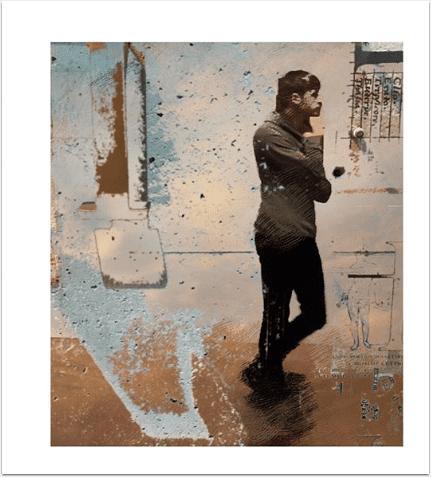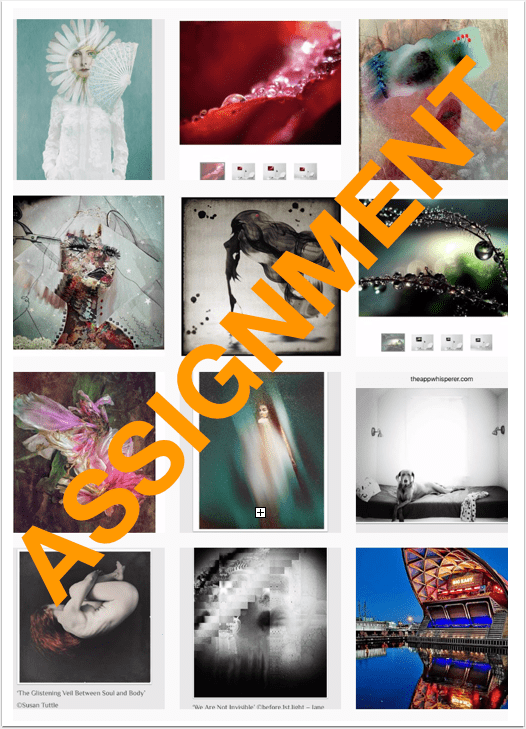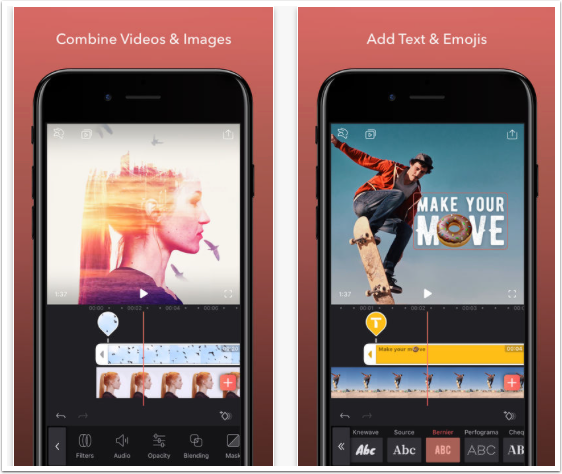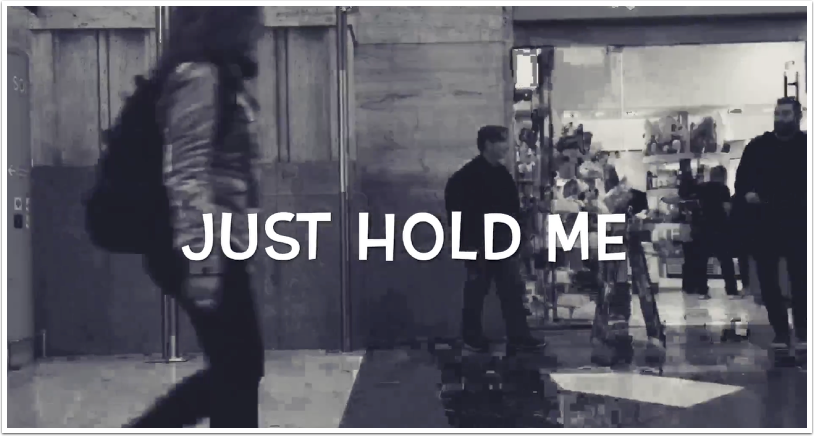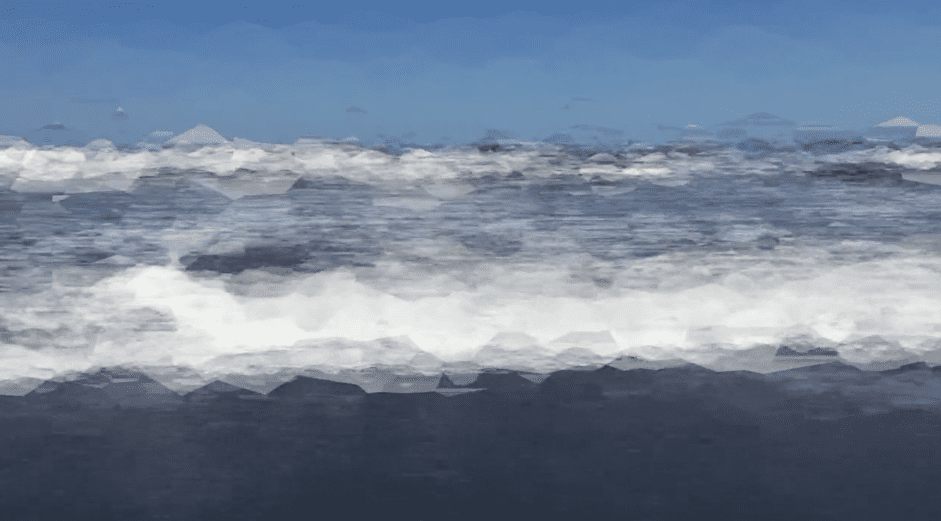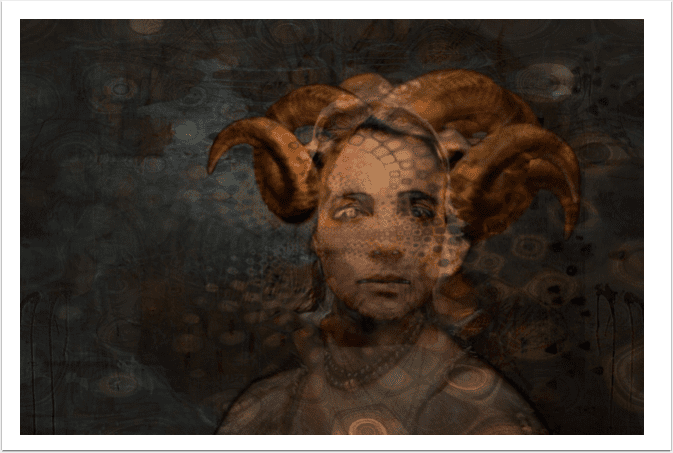
Mobile Photography & Art – Portrait of an Artist – Seeing Through The Eyes of Maria Cecilia de São Thiago
We are delighted to bring to you the second of this years series of interviews and the fourteenth of this fascinating series, within our Portrait of an Artist column entitled “Seeing through the eyes…”. This is a section that has been created by our wonderful Portrait of an Artist Editor, Ile Mont. Mont has been inspired by the life and works of Carolyn Hall Young, as so many of us have. Young was the main contributor to our Portrait of an Artist Flickr pool and filled it with portraits of so many wonderful people, not only of herself. It is for this reason that Mont wanted to create this section, to enable us to view the artists style through their own eyes. At the end of each interview, Mont will keep Young’s tradition alive, with a portrait of herself, seen through the eyes of the artist. In this case, you will see that at the end of this interview there are portraits of Mont, seen through the eyes of Maria Cecilia de São Thiago, what a gift!
Yesterday, we added Maria Cecilia de São Thiago’s work to our online gallery. If you have not viewed that yet, we strong encourage you to do so. Please go here.
Please continue to post your mobile portraiture to our dedicated Flickr group or use this hashtag on Instagram #tawportraitofanartist, this way, Mont will search through these artists first to interview. (Foreword by Joanne Carter).
All images in this interview ©Maria Cecilia de São Thiago, with the final images a collaboration ©Ile Mont/Maria Cecilia de São Thiago.
(To view our other published interviews in this series, please go here).

Would you like to introduce yourself?
I am a Photographer and Graphic Designer from from Paulo, Brazil.
Postgraduate in the Course of Processes, Management and Contemporary Culture at the Madalena Image Studies Center / Unimes Metropolitan University of Santos
Graduated in Course of Visual Communication – Bachelor’s Degree – (FAAP) Faculty of Fine Arts by the Armando Ãlvares Penteado Foundation.
Graduated in Technical Degree in Drawing of Communication and Decoration by iadê – Institute of Art and Decoration, SP, Brazil.
My research today begins with the need to go back to the works I had started in my youth when I used ecoline, and Indian ink to make traces and scribbles in the delineation of the lights and shadows of printed photographs, creating a new way of drawing over the image. Making art impelled me to study from childhood.
With the advent of the iPhone and iPad, I discovered that I could take back those enlargement drawings that had been forgotten.
What does ‘being creative’ mean to you?
It means seeing in a different way wherever I am. I charge daily, even in routine activities, even on the most boring days, to get a new look at something monotonous.
Creativity is the motion we all have inside.
Creativity is putting out what lives have hidden inside.

Can you describe the time when you first realised that creating was something you absolutely had to do?
Yeah, I know exactly when it happened.
In my first Art class in Kindergarten. My teacher, a great friend to this day, who was fundamental and decisive for my formation, gave an exercise for the whole class with paper, string, and gouache. The result left me so overwhelmed that instead of doing just one or two, I ended up this day taking home a pile of artwork. I made a lot more at home and I never failed to marvel at the results.
What are you trying to communicate with your art?
My work attempts to show how photography extends beyond its own physical and subjective limits and often tells a whole story about the effects of human interaction.
Rather than presenting a factual reality, an illusion is fabricated to conjure up the realms of our imagination. I create through processes of imagination and visualisation what can be seen explicitly as a ritual to perceive intuitively what is hidden.
My images, sometimes dreamy, or simply pictorial are made with the iPhone and elaborated through applications for iPad as a Digital Collage.
My art reflects the world because my concerns are for the ills of the human being as a whole, almost as characters, portray the contradictions, inconsistencies of our society, and the anxieties of our time, and incorporate the most dynamic elements of our daily life.

Why portraits and self-portraits?
I see selfies as self-portraits made by so many artists throughout their careers, where it was common painters like Caravaggio, Albert Durer, Gustav Courbet, Vermeer, Van Gogh, Picasso, Klee, Matisse, to name a few.
The self-portrait, for me, represents what one imagines, desires or idealizes to be. It consists of a speech made in the first person, that is, of a visual autobiography, and reveals a self-directed, reflective look.
If this type of work is a further exploration of the soul of the artist or if this simply serves as a model, the artist is undoubtedly the cheapest and available model to use.
The reason I make self-portraits is definitely that I can do whatever I want with my face. I can deconstruct it, I can cut, cut, scratch, knead, sew, and I will not need to explain why I see that face at that moment, like that.
But whatever the reason for others, almost all artists, from painters to sculptors, have tried this exploration of their own.
The mechanism through which we present ourselves to others is an effort not to gain their approval, but more to understand ourselves and understand the world we live in.
Self portraiture is for me the best way to know myself. A natural way of self-awareness, acceptance, and inner evolution as a person.
What do you think are the ups and downs about working with your own image?
If selfies are a new form of identity work, a concept to explain the strategies individuals use to transform personal identity avowals into social identity imputations, I can not see why not work with our own image.
In other words, we each have a sense of who we are and who we want to be (personal identity) and through our actions, we hope to have this particular self-conception reflected.
Within this view, self-portraits or selfies are not just a reference to “pathological narcissism“ (Hall, 2014, p. 276 – Hall J. (2014). The Self-Portrait: A Cultural History. London, UK: Thames & Hudson.), instead they transport the essence of the inner states of a person.
My last research about self-portraiture is a series of blended images of William Adolphe Bouguereau, with Albrecht Durer’s “Self-Portrait at 28” from the year 1500, and myself.

Is there an artwork you are most proud of?
I would say that I am proud of everyone I have ever done, or even proud of the next one I have not yet created.
I have a great collection of paintings and Photos, I’ve done all my life.
In fact, not only paintings but photographs, watercolours, porcelain painting, wood engraving, stone engraving, metal, wood carvings and even silver jewellery of authorship, that is, made on the workbench.
As I am very attached to my things after the first painting was exposed and sold, it was important to think about the next project soon and dedicate myself to it, so I do not get too attached to what was not mine anymore.
How do you know when a work is finished?
There are no rules in art, but in a simple way I would say I trust my instinct.
Luckily, time and experience make it easier to recognise this feeling. I always remember a teacher who said:- “Remember you’re the artist and ultimately the work is done when you say so”.
In the case of iPhoneography, what I can say is that I have several methods of creation and I have practically a method to achieve the result that I wish, in mind.
so before starting to edit a photo, I already know how it will stay and so I work from one application to another until I get what I want.
But It must be said that many times to reach a final result, I save the same image about 30 or 50 times until I get what I imagined.
On the other hand, a work of art is never closed, I can start over again and the results depending on my mood will be completely others. An example is the reinterpretation of Monalisa, I always do.

What kind of creative patterns, routines or rituals do you have?
If you mean technically, I always start with snapseed, to arrange de contrast and color, then I go to ArtStudio and to Superimpose.
But if you mean creation and inspiration, photography and art for me don’t follow any routine. Instead of that, I am always searching to break the fixed rules.
What inspires you?
Everything, from music and films until hearing outside conversations in the bank queue. Things I will learn about myself that I didn’t know yet.
I place myself as an actor who relies on what he sees in his daily life to create new characters.

What are your favorite tools and apps while creating?
iPhone Lenses, and iPad pen.
Photo Edit Apps:
Snapseed
Superimpose
ArtStudio
iColorama
MetaBrush
Procreate
All Adobe
Hipstamatic
Canva
What’s the best advice you ever had about how to be more creative?
Never stop learning, and break the rules.
Our photos bring in each of them everything we have learned, what we live and what we suffer. So it is with the spirit of an artist who uses the ease of communication through art to express and heal the wounds that life has left, that I start every new project. Â My Art is no more than the choice of an appropriate metaphor to express myself. I am sure your art has the same capability to marvel you and others.
What advice would you share with us?
Art and creative, expressive freedom is something that each and every person is capable of. Â To not at least create some art is to not fully embrace your internal capabilities.
Photography is art. Art is really whatever we make of it, the definition is so wide open.

Thank you very much for your insight and time, Cecilia!
Thank you Ile Mont and once again Joanne Carter for the opportunity to let me create a profusion of more than 300 images just to deliver this interview. Thank you, thank you so much for taking the best of me, and thank you for honing my creativity.





I have been seen through the eyes and unstoppable imagination of Cecilia Sao Thiago!
Contact Information
E-Mail: klimtt@me.com
Skype: klimtt
Site: www.klimtt.com
Instagram: @klimtt
Twitter: https://twitter.com/klimtt
Tumblr: http://klimtt.tumblr.com
Pinterest: https://br.pinterest.com/klimtt/
Flickr: https://www.flickr.com/photos/klimtt/
LinkedIn: https://br.linkedin.com/in/klimtt
Facebook Profile: https://www.facebook.com/klimtt
Facebook Art Page: https://www.facebook.com/artbyklimtt/
Facebook Technologie Page: https://www.facebook.com/ihang10/
Hello again…please donate
We have a small favour to ask. More people than ever are reading TheAppWhisperer.com and we could not be more excited about that. We specialise in mobile photography and mobile art and we value all of our readers, writers, contributors and viewers but we do have costs and we do need to ask for your help. We at TheAppWhisperer spend many hours each day, each week and each month to bring you this high quality level of journalism. We do it because we are passionate about it and because we want others to be as passionate too.
If everyone who reads our website, who likes it, helps to support it, our future would be so much more secure. Please help us by offering a contribution or supporting us with a monthly donation of your choosing.
[seamless-donations]
